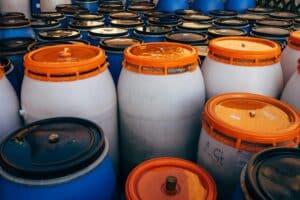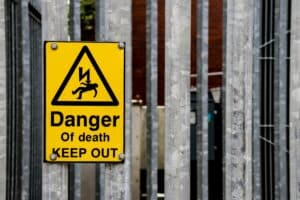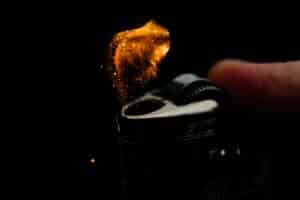We also offer
What is Grewer Oven Test
The Grewer Oven Test, or Grewer Self-Heating Test, determines a substance’s ability to undergo oxidative self-heating or autoignition by exposing it to air at elevated temperatures inside a wire mesh cube. This laboratory test evaluates the risk of spontaneous ignition or combustion of solid or liquid materials when heated. During the test, a sample is placed inside a wire mesh cube immersed in a temperature-controlled Grewer furnace. The furnace temperature increases gradually while the sample’s temperature is continuously monitored.
Testing Principle and Methodology
Fill the sample basket to the top with the test material and tap it several times for settling. Insert a thermocouple at the center of the sample basket.
There are two test modes:
-
Temperature ramp test: The oven starts at room temperature and heats gradually.
-
Isothermal test: The oven is preheated to the target temperature before placing the sample.
Air flows into the oven at a controlled rate of 1 to 2 liters per minute. The temperature increases gradually, limited to a maximum of 2°C per minute. The test monitors the sample’s temperature for up to 12 hours to detect any self-heating or autoignition behavior.
Typically, samples are tested as 95% minus 200 mesh powders, but commercial forms can be used when necessary. For testing guidance, please contact us.
Applicable Standard
This test is conducted according to VDI 2263 Autoignition Testing by Grewer Method.
Data Interpretation
A substance is classified as self-heating if its temperature curve surpasses the inert reference but stays below 400°C. It is classified as autoignition if the sample temperature reaches or exceeds 400°C. This test measures how much heat the material generates and its temperature rise under controlled conditions.
The results are critical for identifying materials that may spontaneously combust or ignite, especially during storage, transport, or processing. The Grewer Self-Heating Test is widely used for chemicals, pharmaceutical powders, combustible dusts, and other potentially hazardous substances.
When to Perform Grewer Oven Self-Heating Test
This test is ideal for determining the onset temperature of self-heating in combustible powders. It provides essential screening for autoignition temperature determination and is applied to materials exposed to elevated temperatures in an air stream.
Why Choose Prime Process Safety Center
Prime Process Safety Center leads in process safety testing with highly experienced laboratory personnel. Our goal is to deliver accurate, reliable, and defensible data that complies with industry and regulatory standards.
-
Expertise in performing Grewer Self-Heating Tests ensures precise and dependable results.
-
Equipped with state-of-the-art Grewer testing instruments for sensitive and accurate measurements.
- As an ISO/IEC 17025:2017 accredited laboratory, we follow rigorous quality and competency requirements for every test we perform.
-
Strict adherence to testing protocols and quality control guarantees consistent results.
-
Our team provides expert interpretation and analysis, offering valuable insights and recommendations tailored to your needs.
FAQ
What is the Grewer Self-Heating Test?
Answer: The Grewer Self-Heating Test is a laboratory procedure used to assess the propensity of materials to self-heat and potentially undergo spontaneous ignition or combustion when exposed to elevated temperatures.
How does the Grewer Self-Heating Test work?
Answer: During the test, a sample of the material is placed in a vessel immersed in a temperature-controlled furnace. The sample's temperature rise is monitored as the temperature of the furnace gradually increases.
Why is the Grewer Self-Heating Test conducted?
Answer: The test is performed to evaluate a material's self-heating properties, particularly its tendency to generate heat and potentially ignite without an external heat source.
What parameters are monitored during the Grewer Self-Heating Test?
Answer: The test monitors the sample's temperature changes over time when subjected to increasing temperatures, observing any self-heating tendencies.
How long does the Grewer Self-Heating Test typically last?
Answer: The duration can vary based on the material being tested and the specified testing conditions, ranging from several hours to multiple days but typically we conduct this test for up to 12 hours.
What safety measures are observed during the Grewer Self-Heating Test?
Answer: Safety protocols are followed to prevent potential fire hazards. Adequate ventilation and proper handling of materials susceptible to spontaneous heating are crucial.
What does a positive result in the Grewer Self-Heating Test indicate?
Answer: A positive result suggests that the material has exhibited self-heating tendencies, indicating a potential risk of spontaneous ignition or combustion.
How is the data from the Grewer Self-Heating Test utilized in industries?
Answer: Industries use test results to assess fire risks associated with materials, develop preventive measures, and establish safe storage, handling, and transportation practices.
Is the Grewer Self-Heating Test a standardized method?
Answer: Yes, the Grewer Self-Heating Test is a recognized method used in various industries to evaluate materials' self-heating tendencies and assess potential fire hazards.

















